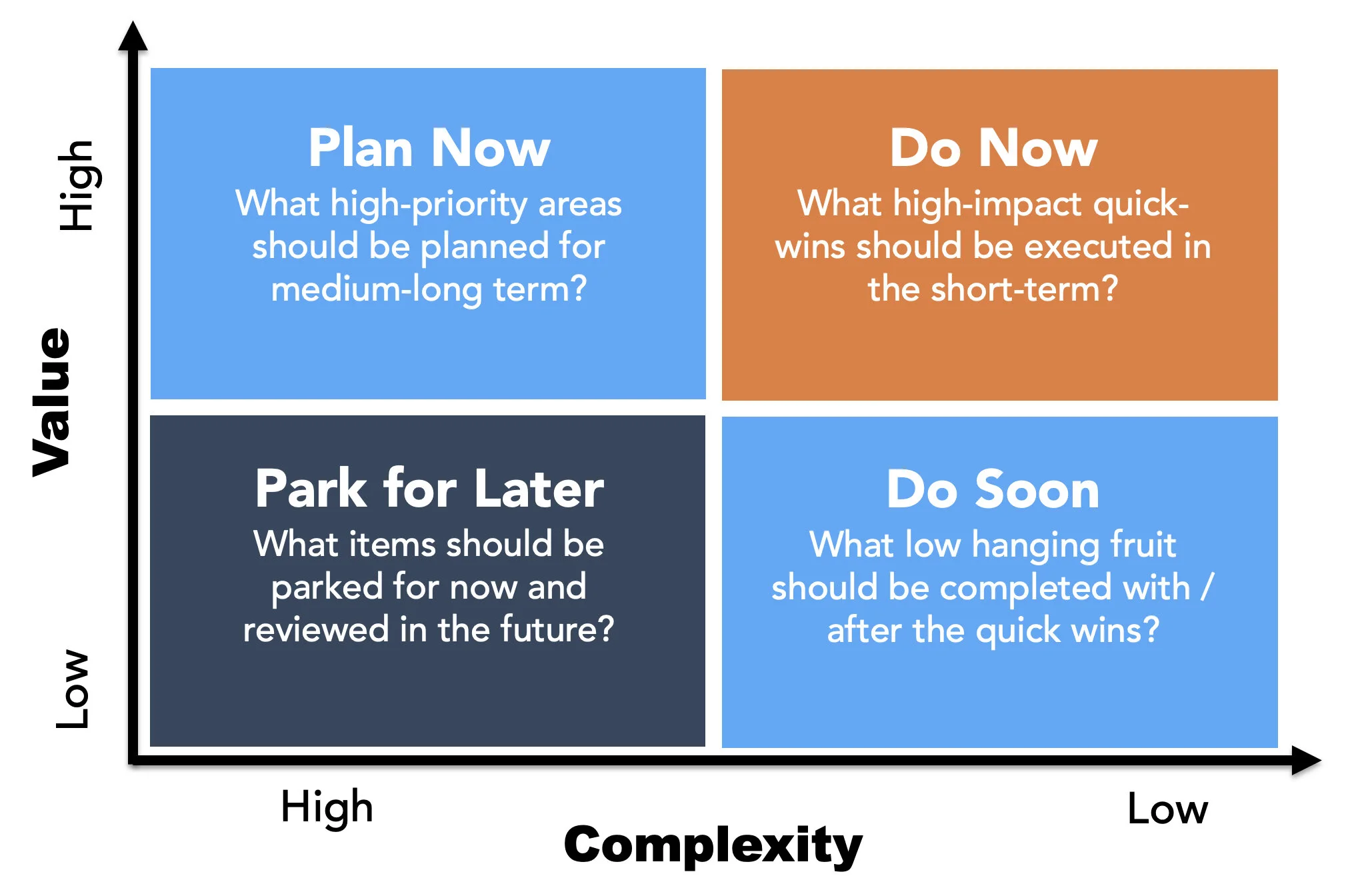Description
The purpose of the Prioritization Mapping Framework is to organize and visualize the relative priority of different marketing initiatives for your organization. To use the Prioritization Mapping Framework, you need to have a clear idea of how value and complexity will be determined; the Prioritization Criteria Framework can be used here. This framework is commonly used in workshop settings, as teams evaluate different initiatives and plot them on the corresponding quadrant. The process of completing the framework together helps teams to appreciate that all initiatives cannot be scored High Value, and that choices need to be made. The output of this framework then becomes the input for a project plan or phased roadmap.
Questions
The Prioritization Criteria Framework helps to answer marketing questions like:
What initiatives make sense to execute first, and what can come later?
What initiatives are ‘low hanging fruit’ that we should execute now?
What initiatives should we park and not spend further resources on?
Steps
To start, capture all of the potential initiatives in enough detail that all team members understand what is being proposed. Use a standard template, and make sure to prepare ahead of any prioritization session.
Align teams on the criteria that will be used to prioritize each initiative. Have this documented and visible for each member of the team so it can be easily referenced throughout the prioritization activity.
Evaluate each activity individually as a team. Plot each activity on the corresponding position within the framework. It is important that everyone can see the working framework as it is populated together.
Make sure to capture any additional notes or clarifications for the initiatives as you review them. Also, expect that additional initiatives will be identified, so be prepared with blank templates to fill out during the activity.
After the first pass of the prioritization activity, review the results as a team. You will likely have a number of initiatives crowded in the High Value quadrants. Take a second pass to see if you can create more separation.
Considerations
Have business stakeholders involved to evaluate value and project managers to evaluate complexity.
Do not skip any of the prep work, like documenting the initiatives and creating the prioritization criteria.
Avoid getting into discussions regarding the timing of implementation, that comes next.

